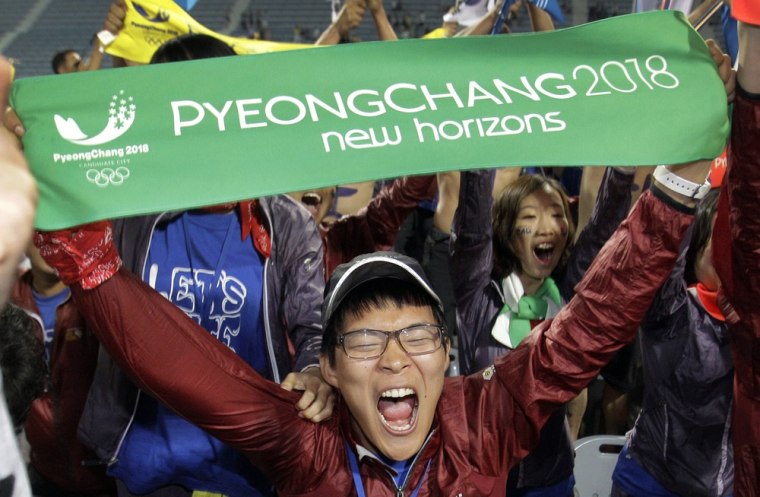After narrowly losing the bidding for the 2010 and 2014 Winter Olympics, South Korea’s Pyeongchang in the mountainous Gangwon-do province has now been named the host of the 2018 Winter Olympic games by the International Olympic Committee.
Skiing and snowboarding are relatively new phenomena in Korea, and many Western ski enthusiasts are likely unfamiliar with the terrain, but today there are 14 ski resorts and more in the works. For those planning to attend the games, you’ve got plenty of time to plan and resorts will undoubtedly develop heavily over the coming years, but if you’re looking to test out Olympic slopes early, here is a preview of the Pyeongchang area and other winter sports regions around South Korea.
Pyeongchang & Gangwon-do province
With soaring mountains and a reliable snow record, Korea is a natural for winter sports, and Gangwon-do province is the epicenter of Korea’s ski scene. Gangwon-do’s most famous slopes are at Yongpyong Ski Resort. It’s Korea’s oldest and biggest ski resort, and one of Asia’s very best ski resorts, with sweet slopes ranging from bunny options to black diamond runs. It also has cross-country courses and the usual comforts of a ski resort town. The buildings manage to be charming without being kitschy, and on a clear day it’s possible to glimpse the East Sea from the slopes. Yongpyong is also a draw for fans of the TV drama "Winter Sonata" — many key scenes were filmed here.
With its Olympic aspirations, Korea invested billions of dollars to build facilities suited to host the games, including Alpensia (a portmanteau of "Alps" and "Asia") a world-class ski resort that opened in 2009. When fully completed, Alpensia will include a ski jump, a stadium, cross-country and biathlon courses, an ice-ridge climbing centre, golf course, water park and an Olympic village with five-star hotels.
In north Gangwon-do, Alps Ski Resort is much smaller but gets the heaviest powder in the province and is spectacularly set near the North Korean border. Nearby, Gangchon Ski has 10 slopes and six lifts, but offers a unique off-slope activity: ice climbing on the nearby frozen waterfall, Gugok Pokpo. This 165-foot waterfall is spectacular at any time of the year but provides ice-climbers with an exciting challenge when it freezes between December and February. Ask for information about bingbyeok deungban (ice climbing).
Jeollabuk-do & Chungcheongbuk-do provinces
For skiers seeking slopes more removed from the upcoming Olympic frenzy, farther southwest in Jeollabuk-do province, Muju Ski Resort has the only slopes located within a Korean national park, the picturesque Deogyu-San National Park. Opened in 1990 Muju has become one of the country’s top winter playgrounds — its 26 slopes have something for everyone, from bunny beginner to mogul-hardened monster with après-ski facilities set in an alpine-themed village.
About a mile from the spa hotels of Suanbo Hot Springs in Chungcheongbuk-do province, Sajo Ski Resort is modest, but has seven slopes and three lifts, and the hot springs make for an oh-so-relaxing return after you’re done conquering the slopes.
Skiing near Seoul
Come the snow season, usually from December to February, there is a handful of ski resorts within easy reach of the capital, Seoul (all an hour or less by bus). Usually there are free shuttle buses from Seoul — see the resort websites for details. Bears Town Resort has 11 slopes, two sledding hills and nine lifts all named after bears. English-speaking instructors, snowboarding and night skiing are available, and the USO, the American troops’ activities organization, runs ski tours to this resort and anyone is welcome to join. Jisan Resort, with five lifts, a variety of slopes including some for snowboarding, is a popular resort that can get quite busy.
The ski season in South Korea runs December to March. Lift tickets cost about W40,000 to W60,000 (US$38 to US$56) and equipment rentals about W30,000 (US$28) per day, but your best bet is to buy a package deal. Packages can be bought in travel agents and include bus transport to and from Seoul, lift tickets, ski and clothing rental, and, if required, lessons and accommodation. An overnight package varies from W50,000 (US$47) for a night in a minbak or youth hostel, to more than W250,000 (US$235) for flashy condos and stylish hotels. Avoid the overcrowded weekends, especially at resorts near Seoul, as Koreans skiing can begin to resemble Korean traffic.
More from Lonely Planet
- The world’s best booze (and where to drink it)
- A perfect day in Vancouver
- Lonely Planet’s top 10 cities for 2011
This story, , originally appeared on LonelyPlanet.com.
